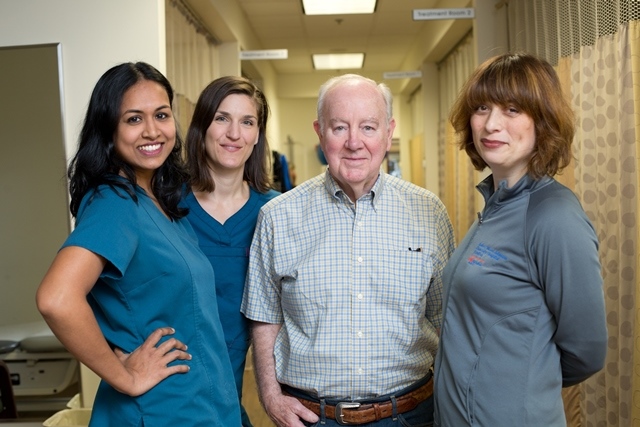“You can see how it’s changed my life.”

Paul was becoming a stranger to those closest to him.
The 76-year-old East Windsor resident, who was struggling to cope with Parkinson’s symptoms, had begun retreating into himself. Paul was avoiding phone calls, outings and conversations. His neighbors, even his own wife, wondered where he had gone.
“That’s not the Paul we knew months ago,” he recalls them saying.
Always somewhat soft spoken, the retired Air Force and commercial pilot was losing control of his vocal volume, a symptom of Parkinson’s. The disease of the central nervous system causes motor and speech impairment, both of which began to surface for Paul in September 2017.
“We couldn’t hear him,” says his wife, Helen. “He sort of had a mask on his face. He showed no expression. When he was talking to people, they couldn’t really tell if he heard him.”
At a loss for what to do, Helen and Paul, both tech-savvy, turned to the internet for answers. They found what they were looking for in the RWJ Rehab LSVT-LOUD speech therapy program. LSVT stands for Lee Silverman Voice Training, named after its creator, with vocal loudness being its objective.
Paul signed up for a four-week intensive program consisting of four weekly sessions and home-based exercises to address the issue. During that time, he worked with several therapists, including Sahi.
“The primary concern from people with Parkinson’s is they can’t be heard,” Sahi says. “A very common thing they say is that the world is deaf.”
She explains that disease scrambles the brain’s inputs, making those with Parkinson’s think they are speaking loudly when they are actually speaking softly. LSVT-LOUD recalibrates their sense of volume.
During office visits, Sahi and the rest of the speech therapy team would walk Paul through vocal warm-ups, consonant and vowel sounds, and functional phrases, all with the intention of increasing Paul’s loudness.
“I was trying to talk to my belly button,” Paul says. “They taught me breathing techniques. It was pretty intense. I was very tired when I finished a session.”
Hellen adds, “You don’t realize how much energy goes into projecting your voice and raising your voice. It took a lot out of him, but it gave him the stamina to do it.”
But Paul was tough, Sahi says, and his determination carried him through.
“He is one of our best clients,” she says. “He was very motivated for this therapy. His motivation changed from not being sure how this would work to totally turning around.”
And Paul continues to turn it around, engaging others in conversation, traveling and enjoying time with his wife of 51 years.
“You can see how it’s changed my life,” he says.